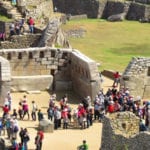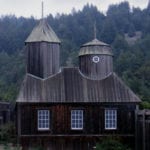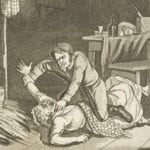 Miscellaneous
Miscellaneous  Miscellaneous
Miscellaneous  Gaming
Gaming 10 Funny Tutorials in Games
 History
History 10 Fascinating Little-Known Events in Mexican History
 Facts
Facts 10 Things You May Not Know about the Statue of Liberty
 Movies and TV
Movies and TV 10 Movie Adaptions That Brought Popular Songs to Life
 Health
Health 10 Miraculous Advances Toward Curing Incurable Diseases
 Miscellaneous
Miscellaneous 10 Undeniable Signs That People’s Views of Mushrooms Are Changing
 Animals
Animals 10 Strange Attempts to Smuggle Animals
 Travel
Travel 10 Natural Rock Formations That Will Make You Do a Double Take
 Movies and TV
Movies and TV 10 Actors Hidden in Your Favorite Movies
 Miscellaneous
Miscellaneous 10 Interesting Things Manufacturers Stopped Making and Why
 Gaming
Gaming 10 Funny Tutorials in Games
 History
History 10 Fascinating Little-Known Events in Mexican History
Who's Behind Listverse?

Jamie Frater
Head Editor
Jamie founded Listverse due to an insatiable desire to share fascinating, obscure, and bizarre facts. He has been a guest speaker on numerous national radio and television stations and is a five time published author.
More About Us Facts
Facts 10 Things You May Not Know about the Statue of Liberty
 Movies and TV
Movies and TV 10 Movie Adaptions That Brought Popular Songs to Life
 Health
Health 10 Miraculous Advances Toward Curing Incurable Diseases
 Miscellaneous
Miscellaneous 10 Undeniable Signs That People’s Views of Mushrooms Are Changing
 Animals
Animals 10 Strange Attempts to Smuggle Animals
 Travel
Travel 10 Natural Rock Formations That Will Make You Do a Double Take
 Movies and TV
Movies and TV 10 Actors Hidden in Your Favorite Movies
10 Aspects Of Colonial America Everyone Pictures Incorrectly
For many, the United States’ origins boil down to a series of quaint anecdotes, but there was a lot more to the century and a half that preceded the Revolutionary War than John Smith, Thanksgiving, and the Pilgrims. You may be surprised that . . .
10The Pilgrims Were A Minority Aboard The Mayflower
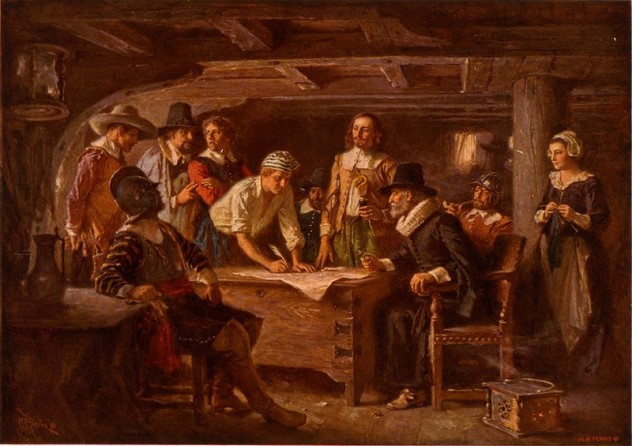
One of the great American founding charters was a calculated measure of self-preservation as much as it was an altruistic celebration of equal rights. The Pilgrims, more properly referred to as Separatists, were actually a minority aboard the Mayflower and, in fact, would always be one within their own colony. That’s why, from the beginning, they had to preserve their right to rule.
The Separatists were just passengers on the Mayflower. The boat was sailed and crewed by 25 “strangers,” i.e., non-Separatists. Among the 102 passengers, no more than about 40 were traveling to the colonies to practice their religion free from persecution. Most of the Mayflower passengers were migrants, tradesmen, and average Joes gambling on the hope that America would be less terrible than England, which was experiencing endemic poverty and the shortage of tillable land. The promise of cheap land was the best chance at a better life available to many of the non-Separatists aboard the Mayflower.
The Mayflower Compact is, in part, a reflection of the Separatists’ minority status aboard the Mayflower. The Separatists feared that, once on land, the “strangers” might break away and start their own colony, leaving the small number of Separatists to fend for themselves. Even worse, the “strangers” might refuse Separatist leadership and rule by majority. That’s why, before landfall at Plymouth, nearly every man aboard the Mayflower was persuaded to sign the Compact. In doing so, he promised obedience to the rulings of the “Civil Body Politick,” a governing body formed largely of the Separatist Church leaders.
9The Rest Of The Squanto Story
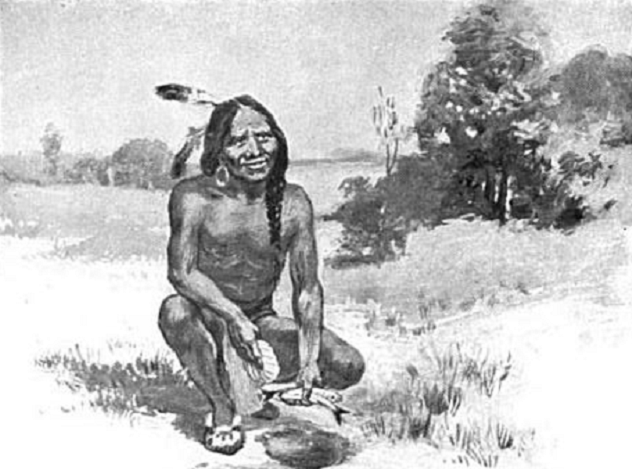
Squanto is remembered as the kindly Native American who somehow knew English and taught the Pilgrims what they needed to know to survive the first hard years at Plymouth Colony. It turns out that Squanto only learned English because he was enslaved by English traders, possibly twice.
Some accounts suggest that Squanto was first taken captive in 1605 as a young boy and worked in England for nine years before returning to America. He could not have been back long, because in 1614, it is certain Squanto and several other natives were lured aboard an English ship, incarcerated, and taken to Spain, where they were sold off. Squanto escaped first to England, and then only after a great deal of wrangling did he manage to procure passage to Newfoundland.
When Squanto finally returned on foot to his village in Massachusetts years later, he found that all of his tribesmen were dead from an epidemic. With no family or village to call his own, it makes more sense that Squanto decided to take up with the nearby English. In return for all of Squanto’s help sustaining the colony by teaching its inhabitants how to hunt and what to plant, the Pilgrims spent the next two decades expanding the native slave trade in Massachusetts.
8What Religious Tolerance?
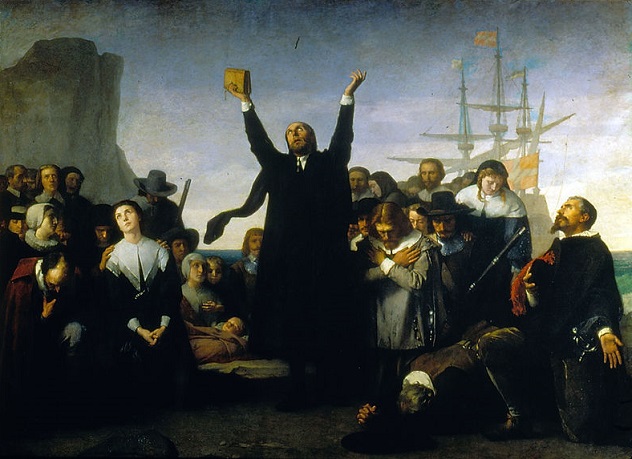
While many Europeans came to America seeking religious freedom, they arrived with all of their biases intact. Their version of religious “freedom” involved a suspicious amount of telling people what to do. In colonial Virginia, laws mandated that all white citizens attend the Anglican Church. Those who refused faced the possibility of execution.
A French colony at Fort Caroline was barely a year old when a Spanish contingent attacked in 1565, decrying the Protestant colonists for “scattering odious Lutheran doctrine.” All 200 of Caroline’s male colonists were killed in the attack. In New England, after decades at odds, Massachusetts Bay asked Plymouth to join their fight against the Pequot tribe. Plymouth was forced to comply when the Massachusetts governor explained that if his colony defeated the Pequot alone, there would be no stopping the Puritan militia from marching on Plymouth.
The Puritans brooked no dissent, exiling men like Roger Williams who suggested that a separation of church and state might be a good idea. Others were banished from Massachusetts for various forms of heterodoxy. Later, during the mid-1600s, religious dissenters like Quakers were hanged in Boston. Virginia enacted anti-Quaker laws in 1659 that would have also led to hangings had lawbreakers been caught. Nearly every colony—and later, every state—enacted some sort of law restricting its inhabitants’ religion.
7Everything About the Salem Witch Trials
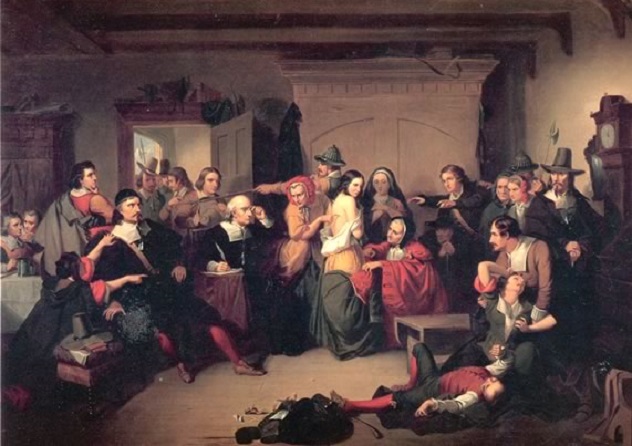
Supposedly, in the burgeoning Massachusetts town of Salem, ministers preaching fire and brimstone stoked religious fervor until it culminated in an explosion of violence, resulting in the witch trials and burning of dozens of innocent women and other marginalized citizens. However, very little of the conventional Salem narrative is true. The trials began at the insistence of the ordinary populace in an extreme form of mob justice and were stoked by the revelatory stories of Salem-area youth. The emphasis is on “area,” because the trials were hardly confined to Salem, extending into neighboring towns like Andover and Ipswich.
Interestingly, the accused were far from marginalized or downtrodden citizens. Prior to the trials, most of the accused “witches” and “warlocks” were prominent citizens and moderately wealthy. That was likely because accusers could benefit financially from a victim’s property in the event of a conviction. Both men and women were convicted and executed in the trials, but none were burned at the stake. All of the victims were hanged or died in prison, except one man who was crushed to death.
Lastly, contrary to the popular belief that equates the trials to a kind of American inquisition, church leaders and ministers actually encouraged reason and rationalism to end the bloodshed. Area ministers were the loudest proponents of the idea the trials should look for actual evidence rather than rely on such “witness” testimony as “I saw her look at my laundry, and the next day, it was stained.”
6There Was A Russian Colony In California
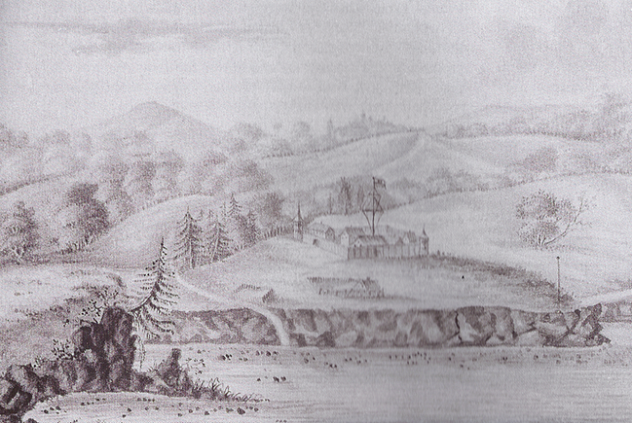
When we think of the colonization of the Americas, the three countries that immediately come to mind are Spain, France, and England. However, North America factored into the imperial ambitions of several other countries, including Russia. Russian exploration of the Alaskan coast began in the early 1700s and was dominated primarily by fur traders. By the end of the 18th century, several Russian settlements dotted the Alaskan coastline as hunters roamed farther and farther south in search of otter furs.
The plentiful mammalian life in California’s coastal waters coupled with the area’s more hospitable climate eventually attracted Russian traders. In 1812, the Russian colony of Fort Ross was established in what is now Sonoma County, California. Fort Ross was the southernmost anchor of the Russian claims that stretched from Alaska across the Pacific Northwest coast.
For the next few decades, Fort Ross served as a hub for 100 or so Russian traders and colonists. A small village sprang up around the stockade, and a decent trade agreement was established with the local native population and Mexican colonists just to the south. The Russian treatment of the natives was often exploitative, though, and labor practices bordering on slavery were commonly employed as the Russians pressed the natives into agricultural labor.
Despite Fort Ross’s small size, a large number of scientific, ethnological, and exploratory expeditions were launched from there, including the first ascent of Mount St. Helens. As the fur trade diminished, though, Fort Ross increasingly struggled to turn a profit. In 1841, the colony was sold to Swiss pioneer John Sutter of later gold rush fame. The Russian colonists sailed for Alaska, where they maintained a presence until the sale of that land to the US in 1867.
5Log Cabins Were Nearly Nonexistent In The Colonies
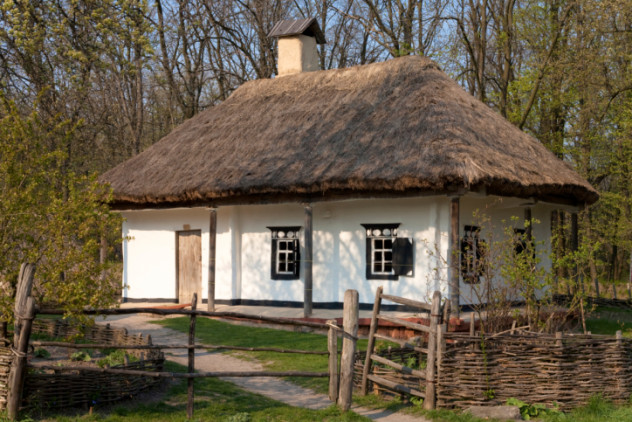
Even though the log cabin is seemingly interwoven with visions of early American settlements, the picturesque and sturdy dwelling was almost entirely absent from colonial North America. From the earliest years of colonization, it would be centuries before log cabins were a regular sight.
That’s because Dutch, British, and French colonists, along with Native Americans, were wholly unfamiliar with the notched-log construction of later children’s toy fame. Instead of log cabins, 17th-century colonists built houses out of “wattle and daub.” First, they drove sticks into the ground upright and wove them together with horizontal branches to form a crosshatch pattern (“wattle”). The wattle was then coated with clay (“daub”) to form walls. Wattle-and-daub construction eventually gave way to timber-frame architecture.
The log cabin seems to have first arrived in America with the mid-1600s influx of immigrants from Scandinavia, where such structures had long been popular. However, the log cabin did not catch on within the colonies until the late 1700s, when large numbers of Scottish-Irish immigrants were impressed by the ease and sturdiness of the Swedish construction and adopted the log cabin, spreading its use throughout the colonies.
4The US Constitution Wasn’t Modeled After the Iroquois Confederacy’s

During the past few decades, many have embraced the idea that the Framers of the US Constitution drew upon the example set by their democratic Iroquois neighbors. These ideological adopters include New York’s public schools and state senate. However, even though there was a great deal of cultural exchange between the colonists and the tribes of the Iroquois, it’s highly unlikely that ideas about government were among those exchanged.
The two most obvious reasons for this are the conspicuous lack of references to the Iroquois during the carefully recorded constitutional debates in the 1780s and the drastic differences between the Iroquois Confederacy’s government and that of the emerging United States. A nonrepresentative council, whose members were often determined by matrilineal heredity, governed the Iroquois Confederacy, and decisions were reached via unanimous consensus of the 50 or so members. Other elements of the Iroquois system were entirely anathema to Founding Fathers’ ideology, such as the more prominent role of women and less social stratification.
As far as the Founders understood Iroquois politics—that is, not very—they found them too democratic, a word that was synonymous with mob rule to John Adams and other Framers. Their ideal was a representative republic governed by a cadre of elites. To say that the natives influenced the Framers is to assign them a modern sociocultural awareness that they clearly didn’t possess.
3The Colonies Weren’t Founded On African Slavery
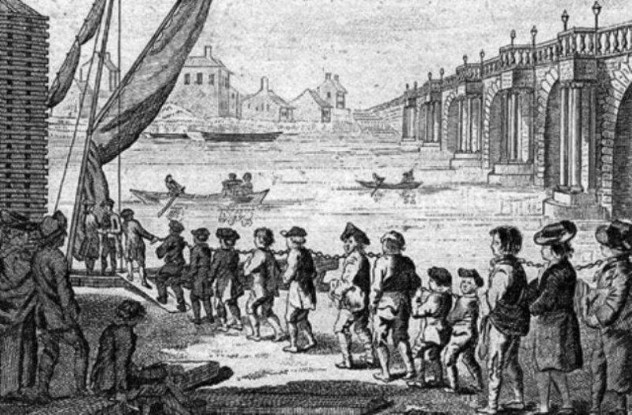
While the British colonies that later formed the US did eventually rely on the African slave trade, they were initially not the biggest participants. During the first century of American colonialism, almost all African slaves were taken to the Caribbean or South America. The African slave trade in the British colonies didn’t reach its height until the mid-1700s, and even then, 90 percent of slaves landed in those other regions.
The colonies weren’t relying on paid labor before the large-scale importation of African labor, of course. During the 17th century, over half of all new immigrants were indentured servants. In theory, freedom was to be earned after 4–7 years’ labor, but documents of indenture were frequently lost, so proving that one’s term of service was up could be nearly impossible. That didn’t matter much, though, because in colonies like Maryland and Virginia, half of all indentured servants died within five years of their arrival to the New World.
Colonial servitude often differed little from slavery besides the possibility of gaining one’s freedom at the end of indenture. For some, not even that possibility existed. In their continuous struggle to subdue Ireland, the English took thousands of prisoners of war and deported the Irish by the tens of thousands. These unfortunates were sent all over the colonies, where they were bound to English planters for life. In effect, the English colonies were established on servitude and then sustained by African slaves.
2America Wasn’t Pristine Wilderness Before Colonization
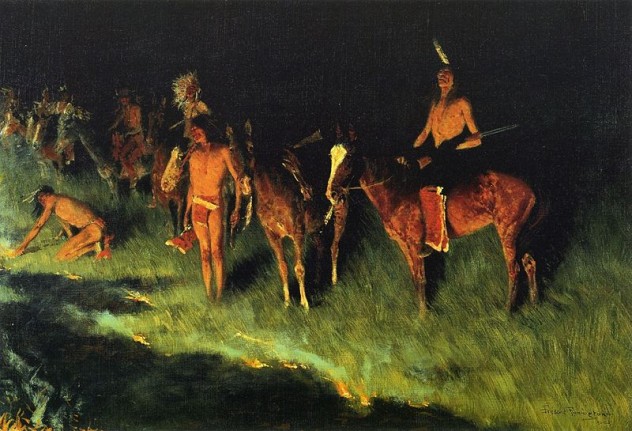
The idea that America was an untouched wilderness was mostly invented by 19th-century American writers pining for a past that never existed and seeing the long-term effects of radical Native American depopulation, which resulted in natural habitat regeneration. Before European colonists arrived, the human impact on the North American landscape was far from negligible. Despite the enduring imagery of the “crying Indian” conservation campaign, natives practiced a wide variety of approaches toward the natural world.
When the first European colonists arrived, what they found was a carefully maintained landscape habituated to a large population’s hunting and farming needs. Before being decimated by disease, the Native Americans transformed New England and Midwestern forests into a mixture of fallow growth, open fields, and meadows via regular, controlled burning. Early colonists noted that the remaining forests weren’t a dense tangle of brush but wide, grassy pathways and openings among trees.
The paradisaical forests of America and the Midwest’s iconic prairies were also the result of carefully planned fires set by natives. After they were cleared from those lands, forest rapidly encroached upon the settlers’ fields, resulting in the lush growth we know today.
1Warfare Was Constant
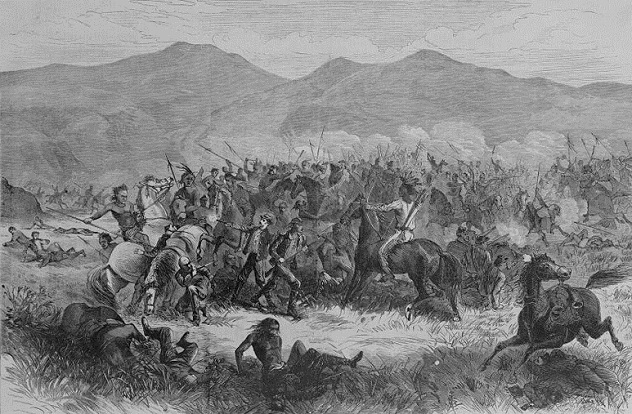
You can’t tell the story of America’s colonial origins without talking about the frequent and constant warfare, yet we often do, skipping over the wars and massacres that shaped the colonies. In the 40 years following the founding of Jamestown in 1607, the Virginia colonists fought three wars with the Powhatan that lasted a total of over 15 years. The contest over land, trade, and food often bubbled over into massacre. Such was the case with the conflict of 1622, when the Powhatan killed 300 Virginians, one-fourth of the entire colony. No sooner did the British colonists retaliate and defeat the Powhatan than they entered into two successive wars with Dutch settlements to the north.
To declare war, those wholesome Pilgrims soaked their flags in their native enemies’ blood and displayed enemy heads on pikes atop their forts. They also tortured captured natives and sold many into slavery. Of course, the natives were just as capable of dismembering, flaying, or burning captives alive.
While much is said about Pilgrims and Puritans, rarely mentioned are the immigrants called “hammerours.” Every colony imported these hardened mercenaries to the New World to fight the natives. That such men were needed is less surprising given that, at various points, the English engaged in warfare against the Powhatans, Pequots, Iroquois, the Dutch, French, and Hurons, among others.
This violence culminated in the deadliest and costliest war per capita America has ever fought. King Philip’s War, named for the native chief, sustained the highest casualty rate of any American war, about twice as high the American Civil War. On the native side, it is estimated that over 10 percent of the population of 20,000 died in battle. Half of New England’s towns were seriously damaged or destroyed, and it took over a century for the region’s income to return to prewar levels. It was a Pyrrhic victory for New England, as a result of which formerly private ventures had no choice but to seek the Crown’s aid and enter the empire as royal colonies.
If you feel so inclined, you can reach J. here.
